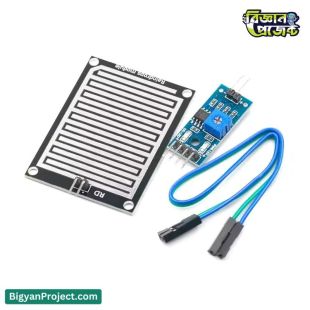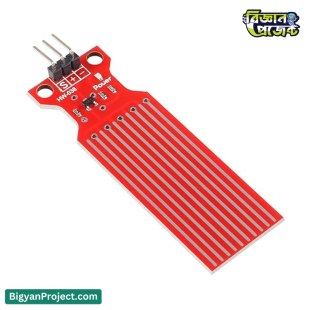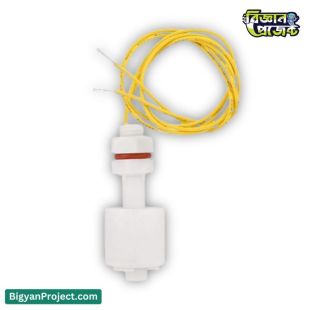- English
- বাংলা
-
 Science Projects
Science Projects
-
 Sensor & Modules
Sensor & Modules
-
 Basic Components
Basic Components
-
 Development Boards
Development Boards
-
 Robotic Parts
Robotic Parts
-
 Drone Parts
Drone Parts
-
 Tools & Accessories
Tools & Accessories
-
 Power Sources
Power Sources
-
 Kits & Combo
Kits & Combo
-
 IC & Microchip
IC & Microchip
-
 Cables & Connectors
Cables & Connectors
-
 Audio Components
Audio Components
-
 Our Services
Our Services
Water & Rain Sensor
The Water & Rain Sensor category offers a wide range of science equipment and project components designed to detect water and rainfall. Perfect for students, hobbyists, and makers, this section helps you find essential sensors for experiments and innovative projects.
There are 3 products.
Discover reliable water and rainfall detection parts for science fairs, classroom experiments, and DIY electronics. The Water & Rain Sensor category at Bigyan Project (বিজ্ঞান প্রজেক্ট) brings together student-friendly modules, probes, cables, and ready-to-use kits tested for Bangladesh conditions—humidity, monsoon rain, and everyday lab use.
Why Choose This Category
Students, hobbyists, and makers will find accurate, affordable sensors that integrate easily with Arduino, Raspberry Pi, ESP32, and micro:bit. Each item focuses on clear documentation, stable performance in tropical climates, and easy wiring so you can finish projects faster and learn practical electronics.
What You Can Build
- Automatic plant watering and soil moisture alerts for home or school gardens
- Rain-triggered window/roof controllers and IoT weather monitors
- Water leak alarms for labs, shops, and server rooms
- Smart buckets, water-level indicators, and overhead tank auto-cutoff
- Flood early-warning prototypes for community or campus projects
Types of Sensors & Modules
- Rain detection boards: plated sensor pads with sensitivity control and digital/analog output
- Water level probes: submersible or conductive rods for tanks, aquariums, and reservoirs
- Soil moisture sensors: capacitive and resistive versions for plant care and agriculture studies
- Float switches & reed sensors: simple on/off level control for pumps and alarms
- Ultrasonic level measurement: non-contact tank level sensing for cleaner installs
- Weather enclosures & cables: protect sensors from dust, splash, and corrosion
Compatibility & Connectivity
Most boards provide 3.3–5V logic for direct use with Arduino UNO/Nano, ESP8266/ESP32 Wi-Fi boards, Raspberry Pi (with ADC where needed), and micro:bit via breakout. You can log data, trigger buzzers, display readings on LCD/OLED, or send notifications via Blynk, MQTT, or HTTP.
How to Choose the Right Sensor
- Project goal: Rain detection, leak alert, or continuous water level tracking?
- Environment: Indoor lab, rooftop, garden, or tank—select corrosion-resistant or sealed parts.
- Accuracy & range: For precise levels, consider capacitive/ultrasonic over basic conductive pads.
- Power & outputs: Check operating voltage, analog/digital pins, and cable length.
- Budget & lifespan: For long-term use, prefer coated or capacitive sensors to reduce wear.
Student Focus: Fast Results, Clear Learning
Each product in this section is selected for classroom clarity—simple schematics, example code, and safe operating ranges. Build confidence with starter kits, then scale to IoT dashboards or automated irrigation. Bigyan Project (বিজ্ঞান প্রজেক্ট) helps you move from idea to demo to competition-ready model.
Quick Wiring Tips
- Use separate grounds and keep sensor cables short to reduce noise.
- For Raspberry Pi, add an ADC when reading analog moisture levels.
- Enable pull-ups/pull-downs or use the module’s comparator for clean digital signals.
- Seal outdoor connectors; add drip loops and weather shields.
Safety & Care
Never immerse non-submersible boards. Dry sensors after wet tests, avoid electrolysis by powering probes only during sampling, and use corrosion-resistant or capacitive probes for long-term soil or tank use.
Typical Specifications (What to Look For)
- Operating voltage (3.3–5V), current draw, and signal type (A0/D0)
- Sensitivity adjustment, sampling rate, and cable length
- Probe material/coating, ingress protection, and mounting options
Support for Bangladesh Projects
We prioritize availability of replacement probes, local warranty support, and guides aligned with SSC/HSC and university coursework. Products are curated for monsoon humidity and common classroom tools available across Bangladesh.
Mini FAQ
Q: Which sensor is best for rain detection? A: Use a rain pad with comparator; for weather stations, add a cover and periodic cleaning.
Q: How to prevent corrosion in soil sensors? A: Use capacitive probes, power only during readings, and keep voltage within spec.
Q: Can I make it IoT-enabled? A: Yes—pair with ESP32/ESP8266 and send data to cloud dashboards or phone alerts.
Get Started
Pick a sensor, follow the wiring guide, upload the sample code, and test with real water or rainfall. With Bigyan Project (বিজ্ঞান প্রজেক্ট), you can prototype quickly, explain the science clearly, and present impressive results for school, college, or university competitions.



